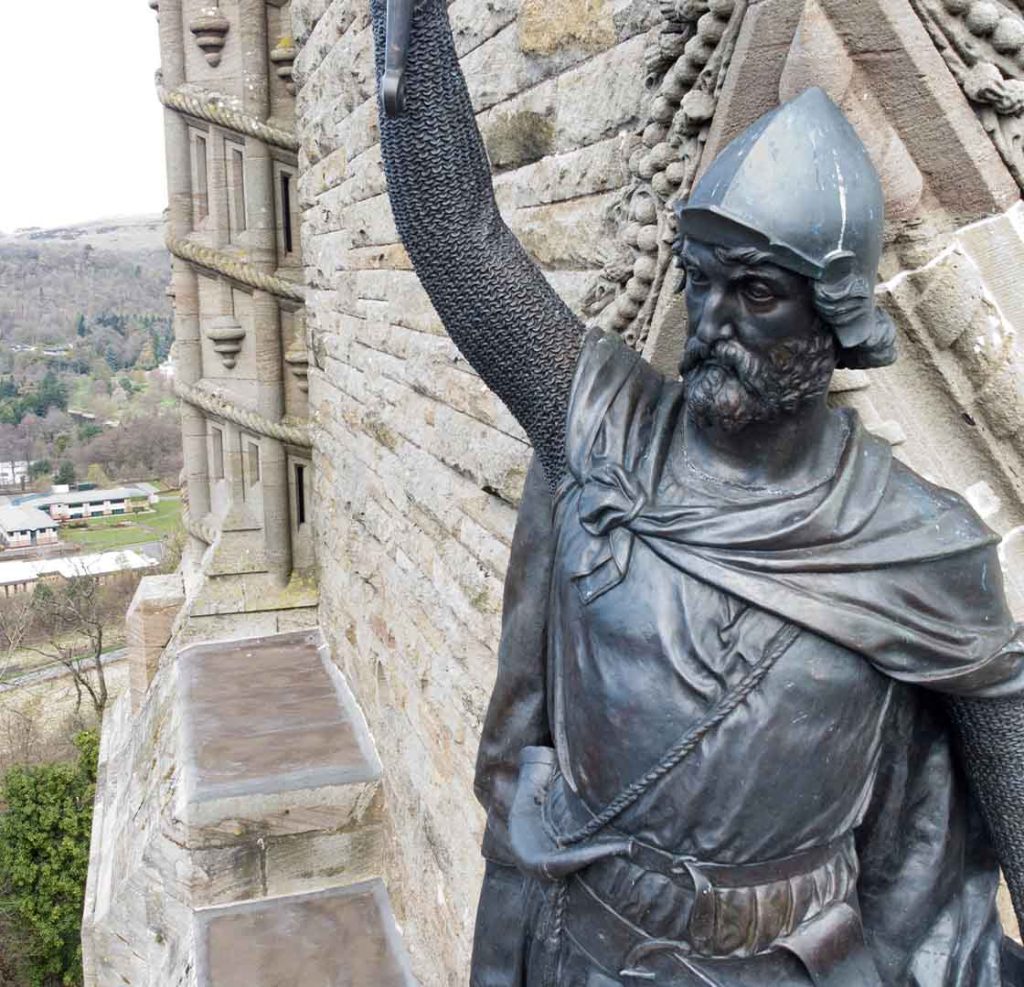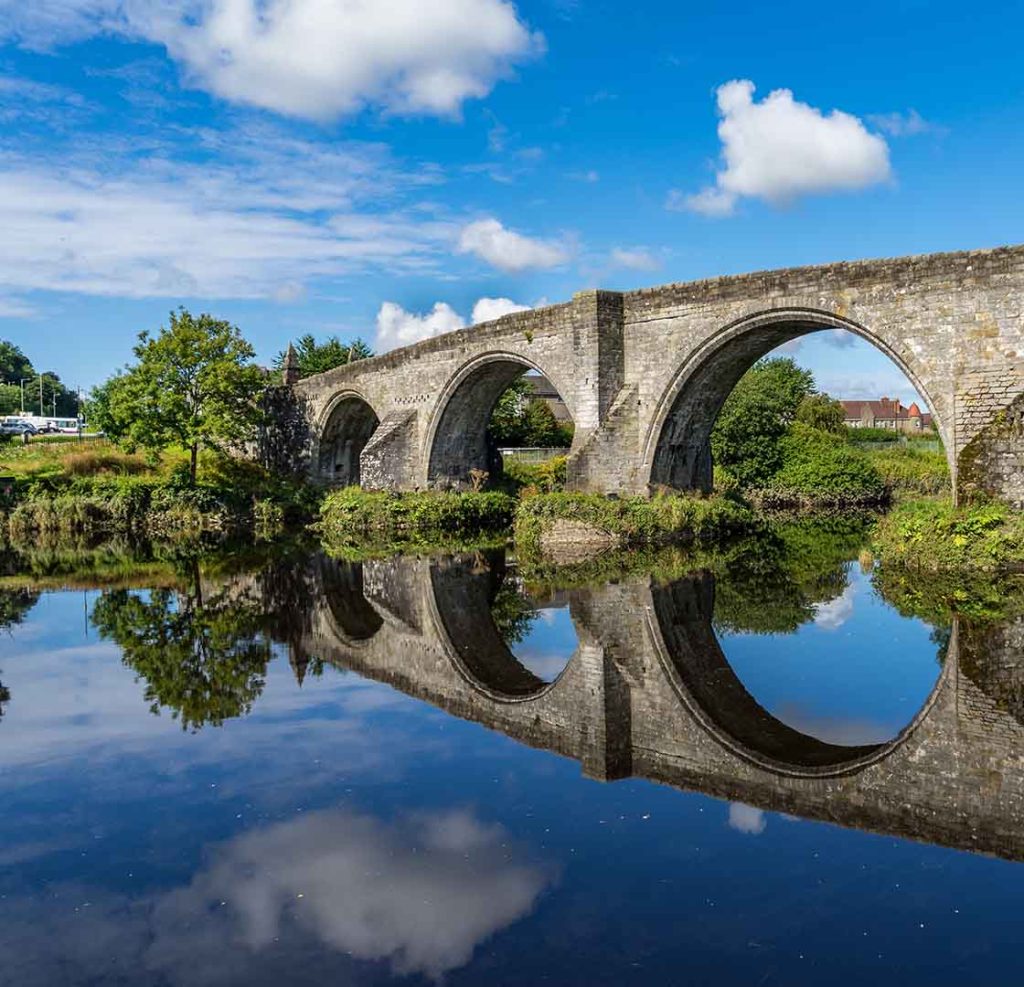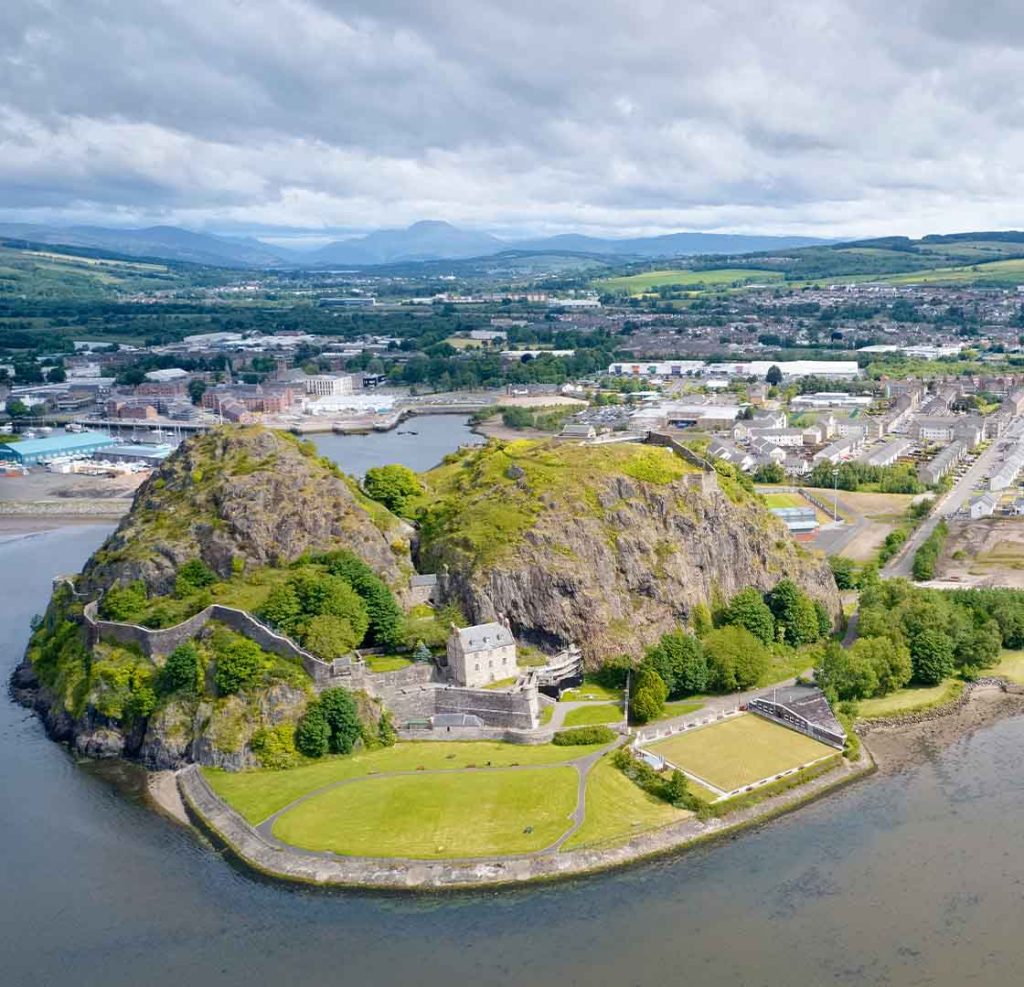If you take a day trip through to Stirling then as you arrive towards the city, you will see a stone tower which sits alone, head and shoulders above anything nearby. This tower marks the life of a man whose life story is taught in schools around the area. His life also became a Hollywood blockbuster! This is the story of Sir William Wallace in Scotland, and his connections to Loch Lomond.

A national hero
Although William Wallace didn’t look like Mel Gibson, he was certainly an intimidating figure. Standing six foot seven inches tall and weilding a sword which was over 5 foot long, he was someone you would like to have had on your side!
Born in 1272, he came to the forefront of Scottish politics during the period of uprising against English domination of Scotland. The Battle of Stirling Bridge in 1297 was an historic win for Wallace and his army. He defeated a vastly superior army in terms of both skill and number. Named Guardian of Scotland, he continued to fight for Scotland until he was ultimately captured and taken to King Edward I of England. Here, he was sentenced to death although his legend lived on and inspired others to fight in future wars of independence.
Braveheart
For many, the first introduction to William Wallace is through Mel Gibson’s 1995 Holywood movie, Braveheart. Whilst best regarded as fiction inspired from fact – and there are plenty of sites who have checked it’s (lack of) historical accuracy – it’s still a cracking movie that opens up Scottish history to a wide audience. However what it does get right is the deep patriotic feeling that runs through many Scottish people, even though we don’t always shout “freedom!” as we walk down the street.
William Wallace and Loch Lomond
If you are interested in finding out more about Wallace, then here are some areas around Loch Lomond that are worth a visit.
Wallace Monument & Stirling Bridge

For anyone interested in Wallace’s life, then a visit to the Wallace Monument is a must. Only 45 minutes away by car from Loch Lomond Waterfront, it not only hosts three floors of exhibitions, but also a wonderful panoramic open-air view of the landscape from the top. It takes 246 steps to reach there, and they are small and narrow. There are no lifts or escalators at the monument.
Along the way are rooms which explore Wallace’s life. These include the Hall of Arms which hosts The Wallace Sword. This 3kg, 1.68m-tall sword was said to be Wallace’s own weapon. If true, this means the man must have been exceptionally strong. Once you’ve climbed all the way to the top of the monument, prepare yourself for breathtaking views. The Crown is where all the stairs lead, and lets you gaze out over Stirlingshire as William Wallace once did as he prepared for battle. The Wallace Monument is definitely a must-see attraction in the area.
The Stirling Bridge of Wallace’s time is sadly no longer with us. However, a fine construction dating from the 1400s can be seen. Not only was this where Wallace beat the English, it played a part in the Jacobite uprising of the 1700s. Today’s bridge is very pleasant, and makes for a nice place to pause for a picnic when the weather is good.
Dumbarton Castle

After he was captured in Robroyston, Wallace was taken to Dumbarton Castle before his journey to England.
Dumbarton Rock, once known as Alt Clut (‘Rock of the Clyde’), later took the Gaelic name Dun Breatann (‘Fortress of the Britons’), which evolved into Dumbarton. In the 13th century, Dumbarton Castle was a key border stronghold, with the Norwegian frontier just 10 miles away. The Treaty of Perth (1266) ended this threat, but tensions with England soon followed.
Dumbarton Rock was the stronghold of the Kingdom of Strathclyde and endured multiple sieges, the most devastating being a Viking attack in 870, when Norse kings Olaf and Ivar took captives and treasure after a four-month siege.
Alexander II built the medieval castle around 1220 to defend against Norwegian rule in the Hebrides. Not only did William Wallace spend time here, it also provided refuge for Mary, Queen of Scots before her escape to France.
Just a half hour drive form Loch Lomond Waterfront, Dumbarton Castle makse for an interesting trip through Scottish history.
William Wallace’s grave
Wallace met a grim end at the hands of his captors. His body was dismembered and spread throughout the kingdom. Unfortunately, no official resting place has ever been recorded. However, near Cambuskenneth, not too far from the Wallace Monument, sits what remains of Cambuskenneth Abbey. Here, there is a small stone marked ‘WW’. Wallace had close links with monks and priests in the area (his uncle was a priest in nearby Dunipace). So it may seem possible his remains which were sent to Stirling were saved. But are they here? The stone which lays here is pointed directly at Abbey Craig, site of Wallace’s victory at Stirling Bridge and now also where his monument lays. Coincidence? Maybe…
Wallace’s Isle
In Loch Lomond there is a small, wooded isle called Wallace’s Isle. It’s densely populated by trees, and in all honesty perhaps one of the more tenuous connections to William Wallace! Was it named after him after he sought refuge here? Or is it simply named after some other Wallace? Nobody knows. But if you find yourself near Invergulas, take a look for this island and decide for yourself. Check out local cruises for a unique view.
Explore Wallace’s land
Take a holiday at Loch Lomond Waterfront and delve into this history of one of the country’s biggest heroes. Then, after following the life of William Wallace in Scotland, at the end of your day come back and enjoy the peace and tranquility he must have enjoyed himself here at the shores of Loch Lomond.
Get in touch













